
How to Use li-po 3.7V: Examples, Pinouts, and Specs
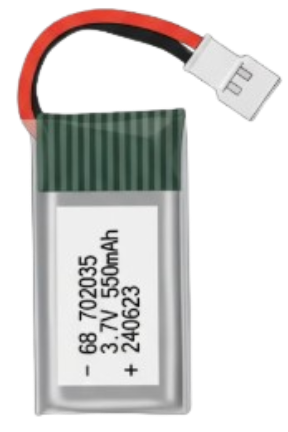
 Design with li-po 3.7V in Cirkit Designer
Design with li-po 3.7V in Cirkit DesignerIntroduction
- The Li-Po 3.7V battery is a rechargeable lithium polymer battery with a nominal voltage of 3.7 volts. It is widely used in portable electronics, remote-controlled (RC) devices, drones, and other applications requiring lightweight and high energy density power sources.
- Common applications include powering smartphones, wearables, drones, RC cars, IoT devices, and small robotics projects. Its compact size and high energy efficiency make it ideal for portable and space-constrained designs.
Explore Projects Built with li-po 3.7V
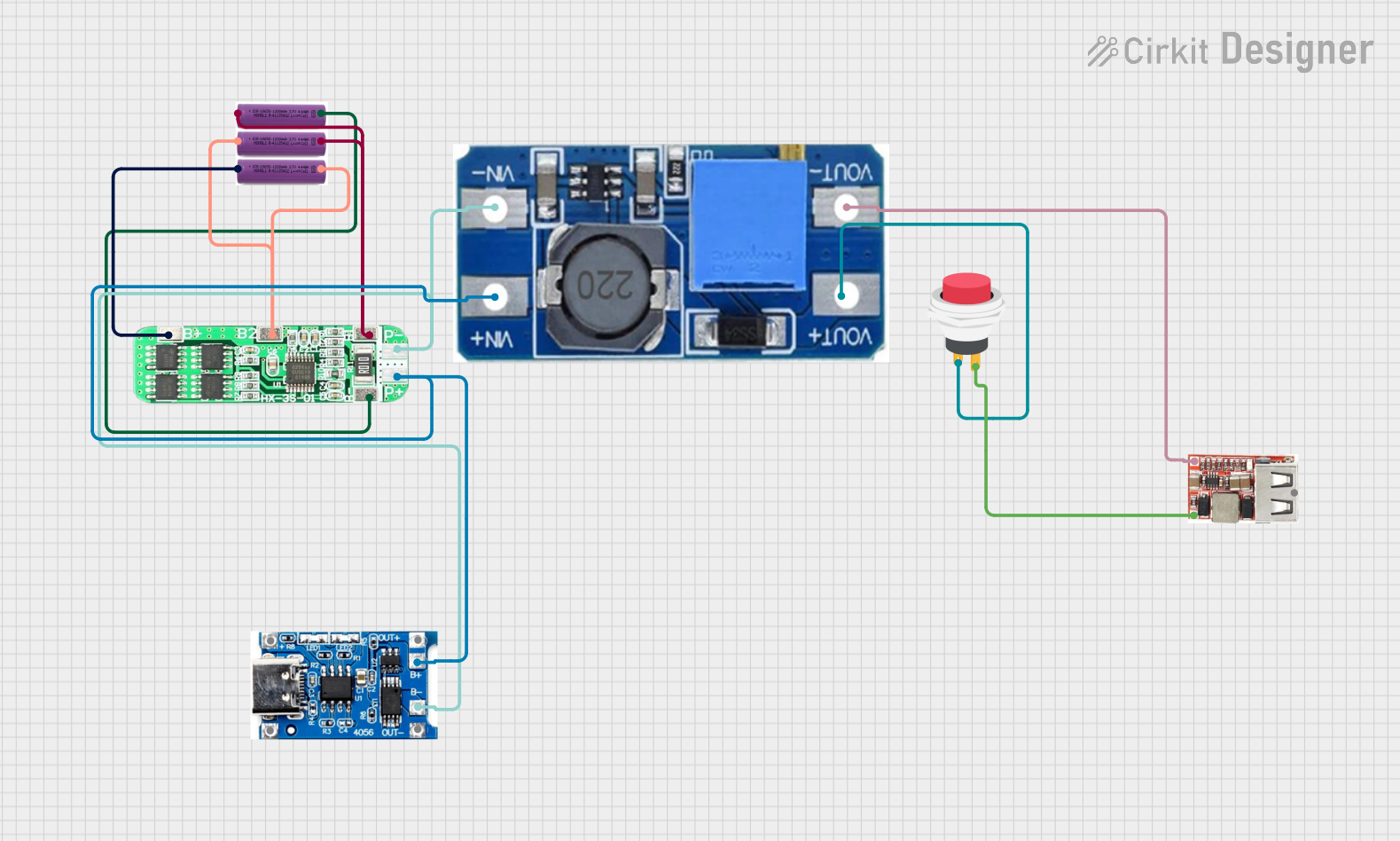
 Open Project in Cirkit Designer
Open Project in Cirkit Designer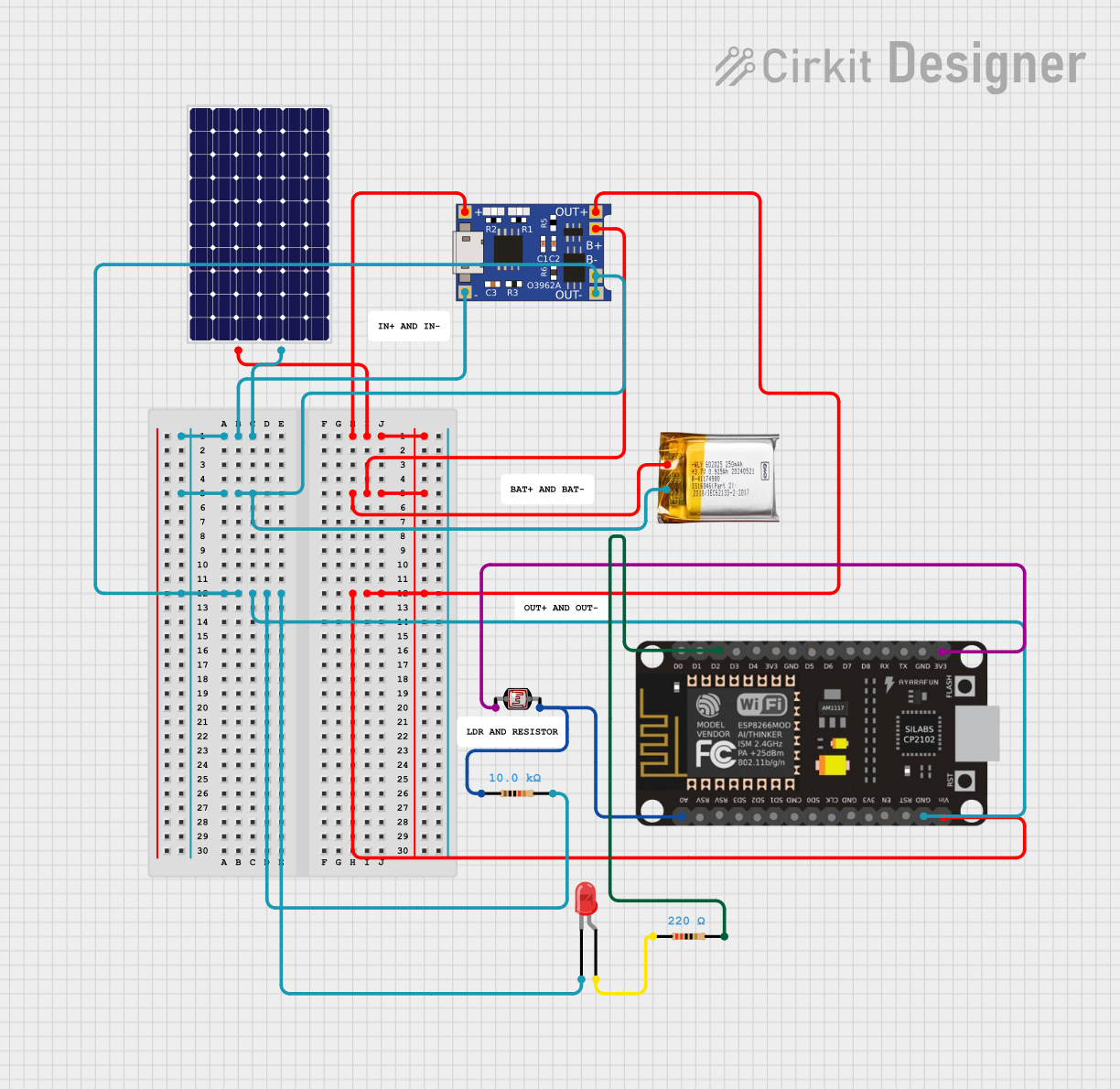
 Open Project in Cirkit Designer
Open Project in Cirkit Designer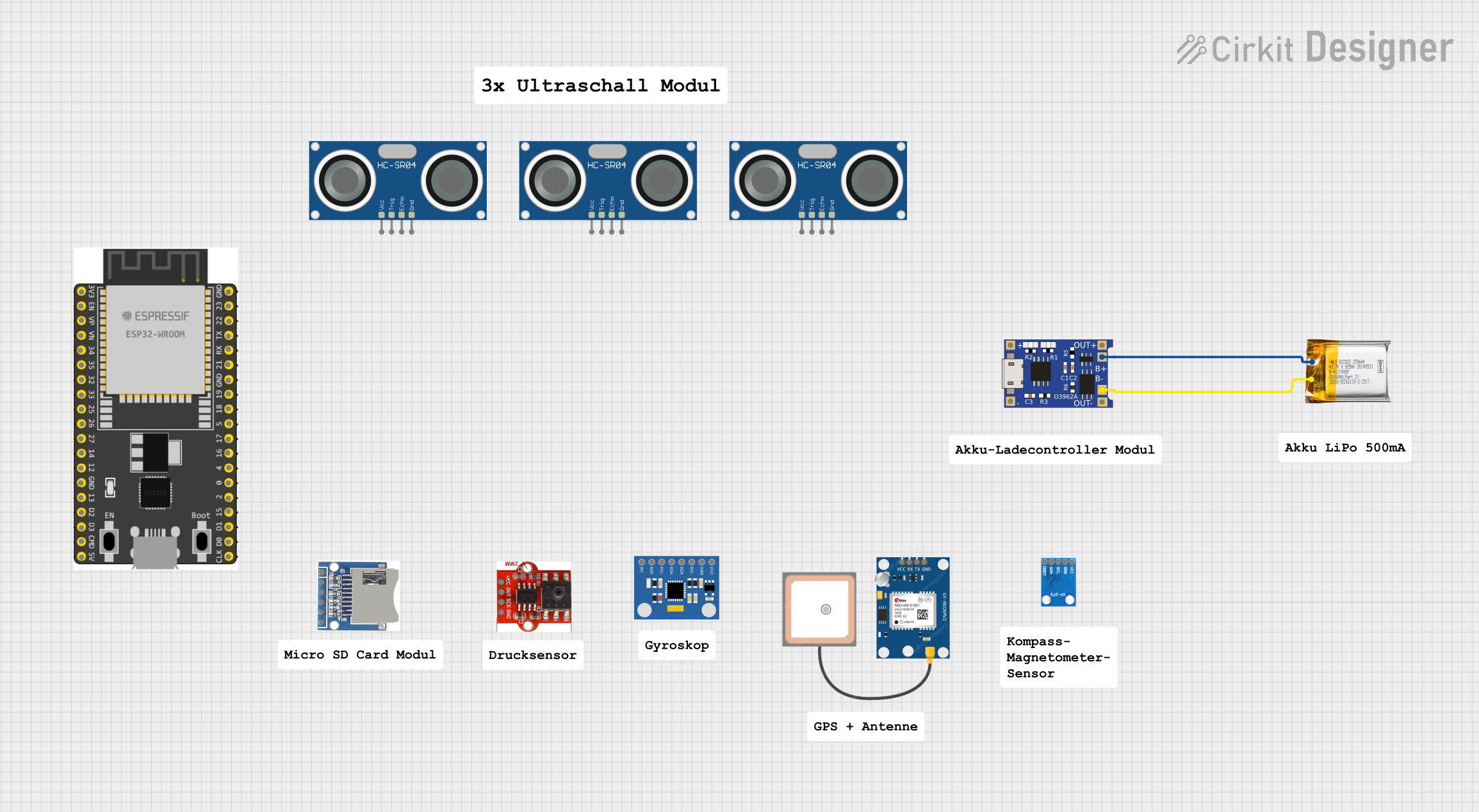
 Open Project in Cirkit Designer
Open Project in Cirkit Designer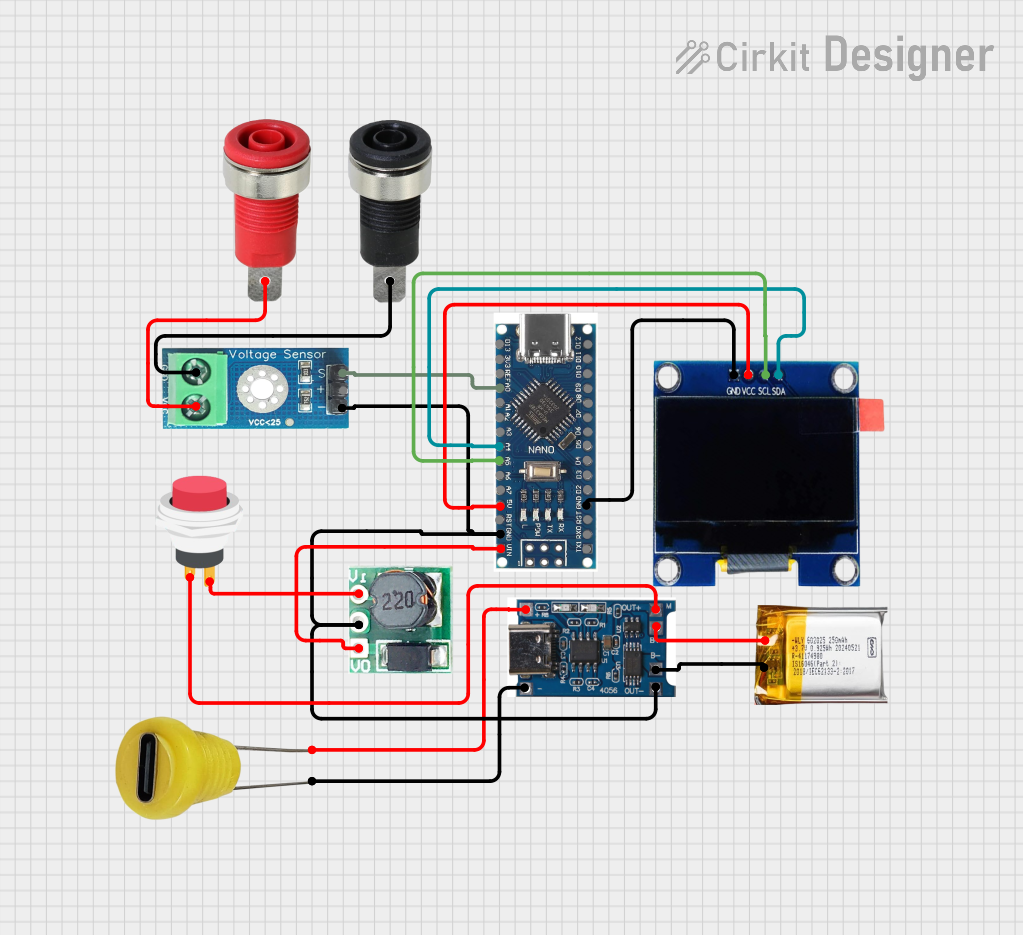
 Open Project in Cirkit Designer
Open Project in Cirkit DesignerExplore Projects Built with li-po 3.7V

 Open Project in Cirkit Designer
Open Project in Cirkit Designer
 Open Project in Cirkit Designer
Open Project in Cirkit Designer
 Open Project in Cirkit Designer
Open Project in Cirkit Designer
 Open Project in Cirkit Designer
Open Project in Cirkit DesignerTechnical Specifications
- Nominal Voltage: 3.7V
- Full Charge Voltage: 4.2V
- Discharge Cutoff Voltage: 3.0V (typical, varies by manufacturer)
- Capacity: Varies (commonly 500mAh to 5000mAh or more)
- Maximum Discharge Current: Depends on the "C" rating (e.g., 1C, 10C, etc.)
- Charging Current: Typically 0.5C to 1C of the battery capacity
- Connector Type: JST, Molex, or bare leads (varies by model)
- Weight: Lightweight, typically a few grams depending on capacity
- Form Factor: Flat, rectangular, or pouch-style
Pin Configuration and Descriptions
| Pin Name | Description |
|---|---|
| Positive (+) | The positive terminal of the battery, typically marked with a red wire. |
| Negative (-) | The negative terminal of the battery, typically marked with a black wire. |
| Balance Lead | (Optional) Used in multi-cell Li-Po batteries for balanced charging. |
Usage Instructions
How to Use the Li-Po 3.7V Battery in a Circuit
- Connection: Connect the positive terminal (+) to the positive input of your circuit and the negative terminal (-) to the ground. Ensure proper polarity to avoid damage.
- Charging: Use a dedicated Li-Po battery charger with constant current (CC) and constant voltage (CV) charging profiles. Set the charger to 4.2V for a single-cell 3.7V Li-Po battery.
- Discharge: Avoid discharging the battery below 3.0V to prevent damage and reduce battery lifespan. Use a low-voltage cutoff circuit or battery management system (BMS) for protection.
- Protection: Incorporate a protection circuit module (PCM) or BMS to safeguard against overcharging, over-discharging, and short circuits.
Important Considerations and Best Practices
- Charging Safety: Always charge the battery in a fireproof container and never leave it unattended while charging.
- Storage: Store the battery at a voltage of approximately 3.8V (storage charge) in a cool, dry place.
- Handling: Avoid puncturing, bending, or exposing the battery to high temperatures.
- Current Draw: Ensure the load does not exceed the battery's maximum discharge current (based on its "C" rating).
- Arduino Usage: When using the Li-Po 3.7V battery with an Arduino UNO, a voltage regulator or step-up converter may be required to provide the 5V needed for the Arduino.
Example: Using a Li-Po 3.7V Battery with an Arduino UNO
To power an Arduino UNO with a Li-Po 3.7V battery, you can use a step-up converter to boost the voltage to 5V. Below is an example circuit and code to read the battery voltage using an analog pin.
Circuit Diagram
- Connect the Li-Po battery to the input of a step-up converter.
- Connect the output of the step-up converter to the Arduino's 5V and GND pins.
- Use a voltage divider circuit to measure the battery voltage and connect it to an analog pin (e.g., A0).
Arduino Code
// Define the analog pin connected to the voltage divider
const int batteryPin = A0;
// Define the voltage divider ratio (e.g., R1 = 10k, R2 = 10k)
const float voltageDividerRatio = 2.0;
// Reference voltage for the Arduino (5V for UNO)
const float referenceVoltage = 5.0;
void setup() {
Serial.begin(9600); // Initialize serial communication
}
void loop() {
int rawValue = analogRead(batteryPin); // Read the analog value
float batteryVoltage = (rawValue / 1023.0) * referenceVoltage * voltageDividerRatio;
// Print the battery voltage to the Serial Monitor
Serial.print("Battery Voltage: ");
Serial.print(batteryVoltage);
Serial.println(" V");
delay(1000); // Wait for 1 second before the next reading
}
Troubleshooting and FAQs
Common Issues
Battery Not Charging:
- Cause: Faulty charger, damaged battery, or incorrect charging voltage.
- Solution: Verify the charger settings and ensure the battery is connected properly. Replace the battery if damaged.
Battery Swelling:
- Cause: Overcharging, over-discharging, or physical damage.
- Solution: Stop using the battery immediately and dispose of it safely.
Low Runtime:
- Cause: Battery capacity degradation or excessive current draw.
- Solution: Replace the battery if it has aged. Ensure the load is within the battery's discharge limits.
Arduino Not Powering On:
- Cause: Insufficient voltage or current from the battery.
- Solution: Use a step-up converter to boost the voltage to 5V. Check the battery's charge level.
FAQs
Q: Can I use a Li-Po 3.7V battery without a protection circuit?
A: It is not recommended. A protection circuit prevents overcharging, over-discharging, and short circuits, which can damage the battery or cause safety hazards.Q: How do I know when the battery is fully charged?
A: A fully charged Li-Po 3.7V battery will have a voltage of approximately 4.2V.Q: Can I connect multiple Li-Po batteries in series or parallel?
A: Yes, but ensure proper balancing and use a BMS designed for the specific configuration.Q: What is the typical lifespan of a Li-Po 3.7V battery?
A: The lifespan is typically 300-500 charge cycles, depending on usage and care.
By following these guidelines, you can safely and effectively use a Li-Po 3.7V battery in your projects.